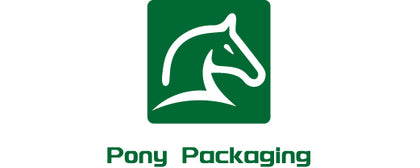Receipt Paper: Why It Fades and How to Restore It?
Receipts play a crucial role in our daily transactions, documenting purchases and serving as proof of financial transactions. However, many of us have experienced the frustration of faded receipts, making it challenging to review or claim expenses. In this comprehensive article, we will delve into the science behind receipt paper fading and explore effective techniques to restore them. Whether you're using 3 1 8 x 230 thermal paper 50 rolls or other thermal register paper 3 1 8 options, understanding the causes of fading is the first step towards preserving your important receipts.
I. Understanding Thermal Paper:
Thermal paper is commonly used in cash registers, point-of-sale (POS) systems, and other receipt-printing applications. The 3 1 8 x 230 thermal paper receipt rolls are popular choices due to their compatibility with various machines. This type of paper uses a special coating that reacts to heat, producing the printed image without the need for ink cartridges.
II. Causes of Receipt Paper Fading:
Several factors contribute to the fading of thermal cash register paper 3 1 8 receipts. Understanding these factors is essential for implementing effective restoration techniques.
Exposure to Light:
One of the primary reasons for receipt paper fading is exposure to light, especially sunlight and artificial light sources. UV rays can accelerate the chemical reactions in the thermal coating, leading to a gradual loss of image intensity.
Heat and Humidity:
Thermal paper is designed to react to heat, but excessive heat and humidity can accelerate the fading process. Prolonged exposure to high temperatures can cause the thermal coating to undergo chemical changes, resulting in faded prints.
Poor Storage Conditions:
Improper storage conditions, such as storing receipts in wallets or pockets for extended periods, can contribute to fading. Friction and contact with other surfaces can damage the thermal coating, compromising the longevity of the print.
III. Choosing the Right Thermal Paper:
To minimize receipt fading, it's essential to choose high-quality thermal paper. Opt for 3 1 8 x 230 thermal paper 50 rolls from reputable suppliers. High-quality thermal paper is more resistant to fading and offers better durability.
IV. Prevention Techniques:
Preventing receipt paper fading begins with adopting proactive measures. Consider the following techniques to preserve the quality of your thermal receipts:
Store Receipts Properly:
Avoid keeping receipts in areas exposed to direct sunlight or high temperatures. Store them in cool, dry places to slow down the fading process.
Use Protective Sleeves:
Consider placing receipts in protective sleeves or folders to shield them from light and physical damage. This is particularly important for business owners who need to retain receipts for accounting purposes.
Digitize Receipts:
In the digital age, many businesses and individuals are opting to digitize receipts. Scanning or taking clear photographs of receipts allows you to store them electronically, reducing the risk of physical deterioration.
V. Restoration Techniques:
If you find yourself with faded thermal receipts, don't despair. There are effective restoration techniques that can help revive the print quality:
Heat Application:
Gently applying heat to the faded receipt can reactivate the thermal coating and enhance the visibility of the print. Use a hairdryer on a low setting or an iron with a protective layer to apply heat evenly.
Thermal Printer Duplication:
If you have access to the original transaction data, consider using a thermal printer to duplicate the faded receipt. This method ensures a fresh print with optimal clarity.
Chemical Restoration Solutions:
Specialized chemical solutions designed for thermal paper restoration are available in the market. These solutions work by reactivating the thermal coating, restoring the print's intensity.
Conclusion:
Preserving the legibility of thermal receipts, whether they are printed on 3 1 8 x 230 thermal paper 50 rolls or other thermal register paper 3 1 8 options, requires a combination of preventive measures and effective restoration techniques. By understanding the causes of fading and adopting proactive strategies, individuals and businesses can ensure the longevity of their important financial records. Whether you're a business owner or a conscientious consumer, the science behind receipt paper fading should no longer be a mystery, and the tools for restoration are readily available.

